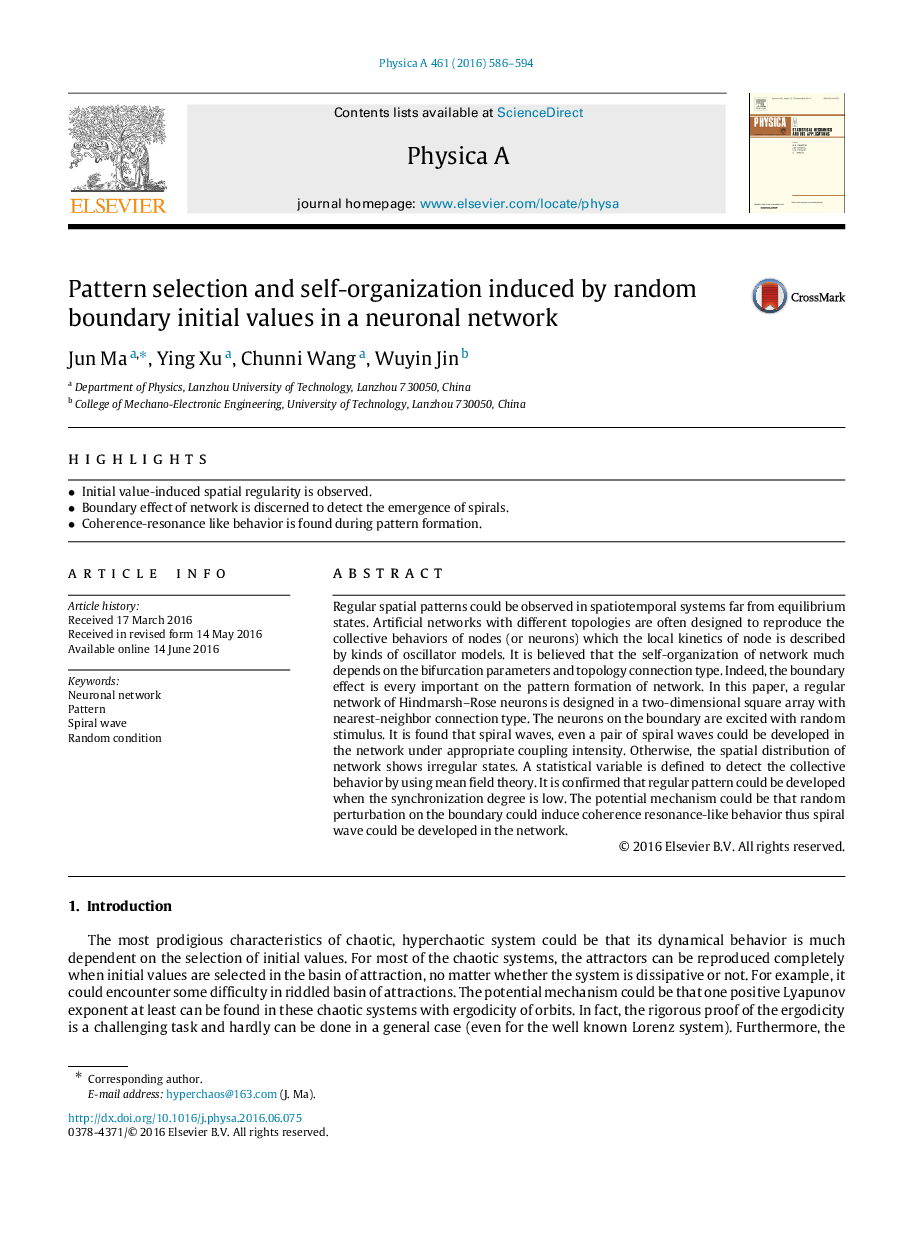| Article ID | Journal | Published Year | Pages | File Type |
|---|---|---|---|---|
| 7377301 | Physica A: Statistical Mechanics and its Applications | 2016 | 9 Pages |
Abstract
Regular spatial patterns could be observed in spatiotemporal systems far from equilibrium states. Artificial networks with different topologies are often designed to reproduce the collective behaviors of nodes (or neurons) which the local kinetics of node is described by kinds of oscillator models. It is believed that the self-organization of network much depends on the bifurcation parameters and topology connection type. Indeed, the boundary effect is every important on the pattern formation of network. In this paper, a regular network of Hindmarsh-Rose neurons is designed in a two-dimensional square array with nearest-neighbor connection type. The neurons on the boundary are excited with random stimulus. It is found that spiral waves, even a pair of spiral waves could be developed in the network under appropriate coupling intensity. Otherwise, the spatial distribution of network shows irregular states. A statistical variable is defined to detect the collective behavior by using mean field theory. It is confirmed that regular pattern could be developed when the synchronization degree is low. The potential mechanism could be that random perturbation on the boundary could induce coherence resonance-like behavior thus spiral wave could be developed in the network.
Keywords
Related Topics
Physical Sciences and Engineering
Mathematics
Mathematical Physics
Authors
Jun Ma, Ying Xu, Chunni Wang, Wuyin Jin,
